The Tyranny of the Touchscreen
Let’s be honest. As an IT pro, how many times this week has your team had to troubleshoot or replace a broken touchscreen? From POS systems and warehouse tablets to public display kiosks, the world runs on glass. We’ve become so accustomed to poking, swiping, and pinching our way through digital workflows that we barely even think about it. It’s the default for public spaces and workplace interfaces. But what happens when the screen causes problems like spreading germs or just won’t work with gloves on, or takes a beating and gets broken regularly? What happens when touching the screen is not just inconvenient, but downright impossible, unsafe, or unhygienic?
You’ve seen these places. They’re the hidden pockets of industry where the standard IT playbook gets stressed to its limit or the screen-based solution causes more problems. I call them ‘Interface Deserts’. These are environments that are so specialized or hostile that the ubiquitous touchscreen can’t survive. For most, these are problems to be worked around with clunky, inefficient solutions. But for a savvy MSP or VAR, these deserts are not obstacles, they’re treasure maps leading to a new world of high-value, physical AI based opportunities.
What Exactly is an ‘Interface dessert’?
An Interface Desert is any physical location or operational scenario where standard human-computer interfaces, especially touchscreens, are rendered impractical, useless or unwanted. It’s not about a faulty device, it’s about a fundamental mismatch between technology and the environment. Think of it as a place where the digital world needs to meet the real world, but the bridge is out. These desserts fall into three main categories: sterile places where cleanliness is paramount, harsh workplaces where the environment itself is the enemy and beautifully architected places where screens or kiosks ruin the aesthetic.
The Sterile Shores: Where Hygiene is King
On these deserts, the enemy is invisible. We’re talking about bacteria, particulates, and contaminants. A single misplaced touch can ruin a multi-million-dollar batch of microchips or compromise a life-saving surgery. Here, the “no-touch” rule isn’t a suggestion; it’s a mandate.
The Surgeon’s Dilemma: Sterile Fields and Digital Data
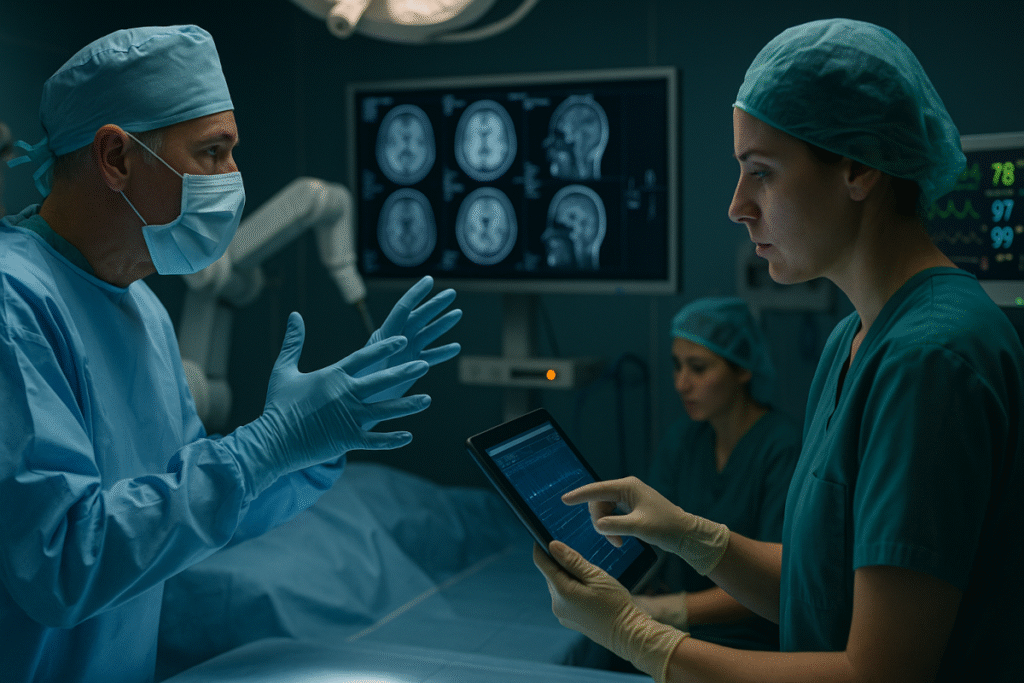
Picture a surgeon, mid-procedure. They need to review a patient’s MRI scans, check vitals on a monitor, or adjust the settings on a robotic surgical arm. Their hands are scrubbed and sterile. The moment they touch a non-sterile tablet or monitor, they are contaminated and must re-scrub, wasting precious time and breaking concentration. The common workaround? A nurse or assistant stands by, acting like a human mouse, trying to interpret the surgeon’s verbal commands. It’s slow, prone to errors, and inefficient. This is a classic Interface Desert.
The Harsh Workplaces: Where Environments Fight Back
These deserts are less about what’s in your hands and more about what’s on your hands the stuff around you. We’re talking about environments that are too hot, too cold, too wet, or just too messy for consumer-grade electronics to stand a chance.
The Commercial Kitchen Crucible: Heat, Grease, and cross contamination
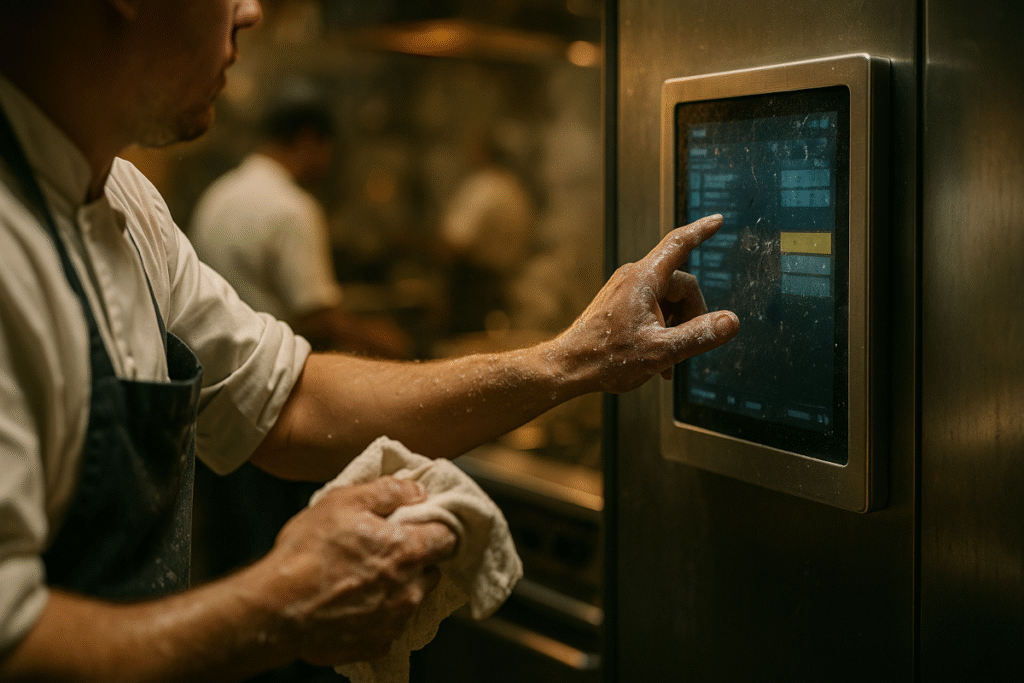
Ever tried to use your smartphone with wet hands? Now imagine being a line cook during a dinner rush. Your hands are covered in flour, grease, or water. You wear gloves for food safety. The ambient temperature is high, and speed is everything. The digital kitchen order system (KOS) mounted on the wall is a great idea in theory, but when a cook must take off a glove, wipe their hands, and carefully tap a greasy screen to mark an order as complete, the entire workflow grinds to a halt. The screen becomes a bottleneck, not a solution.
The Architected Aesthetic: Where Screens Are Out of Place
This category of Interface Deserts isn’t about safety or durability; it’s about a philosophical clash between technology and the environment. These are spaces meticulously designed for human contemplation and appreciation of the physical world.
The Museum Monologue: Contemplation vs. Clutter
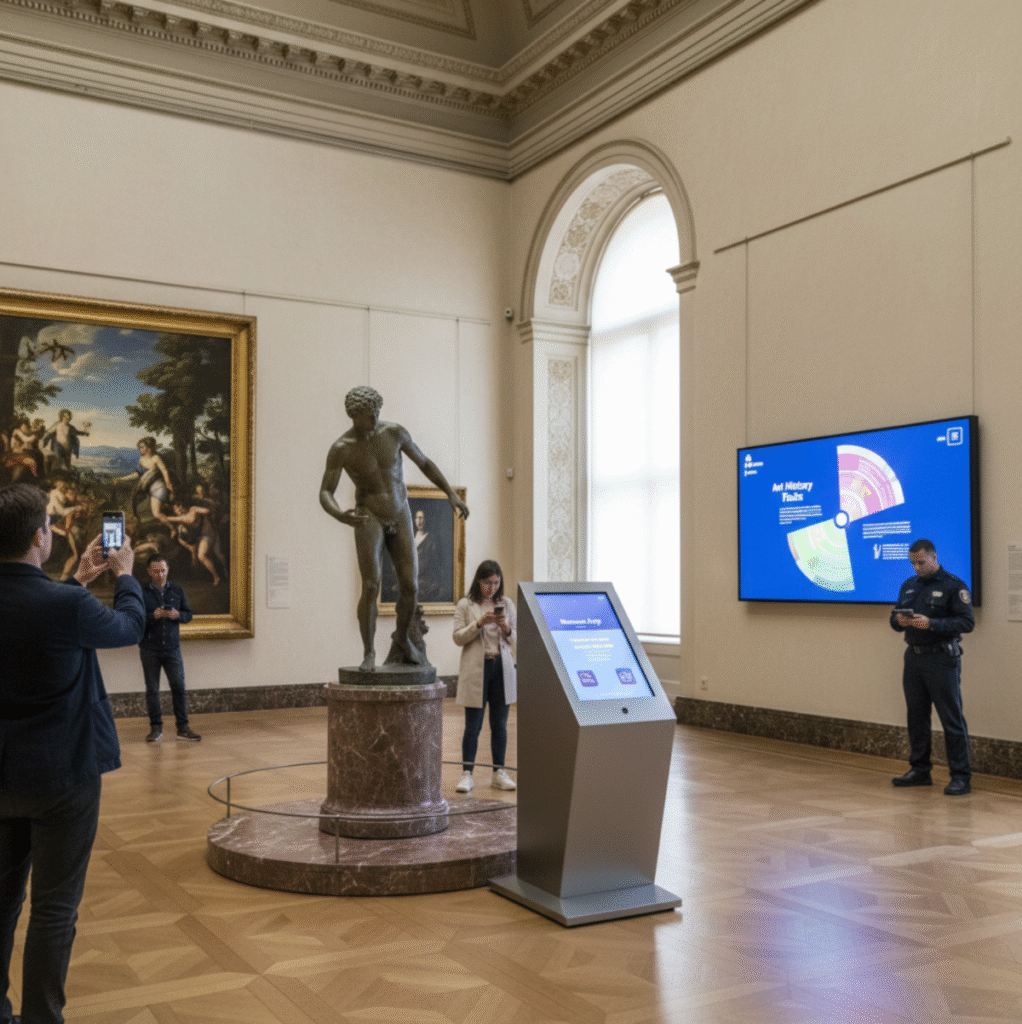
Museums are built to showcase timeless artifacts. A Roman statue has endured for two millennia, but the tablet next to it will be obsolete in five years. The presence of a glowing screen can be a visual and intellectual distraction, drawing the eye away from the masterpiece and towards the device. When a visitor stares at an animated infographic about a painting, they are not contemplating the painting itself; they are consuming information about it. This is a subtle but critical distinction. A museum that relies heavily on screens and kiosks risks becoming a media center, not a sanctuary for art and history. Technology, instead of being a servant, becomes a noisy, demanding guest.
The Solution: Charting a Course with Touchless Technology
So, how do we rescue our clients stranded on these deserts? We build a bridge. That bridge is touchless technology using physical AI. This isn’t science fiction; it’s a mature and rapidly growing field of human-computer interaction that offers a direct solution to the challenges of Interface Deserts. It’s about interacting with digital systems without physical contact.
Gesture Control: Scrubbed In and Getting What Is Needed
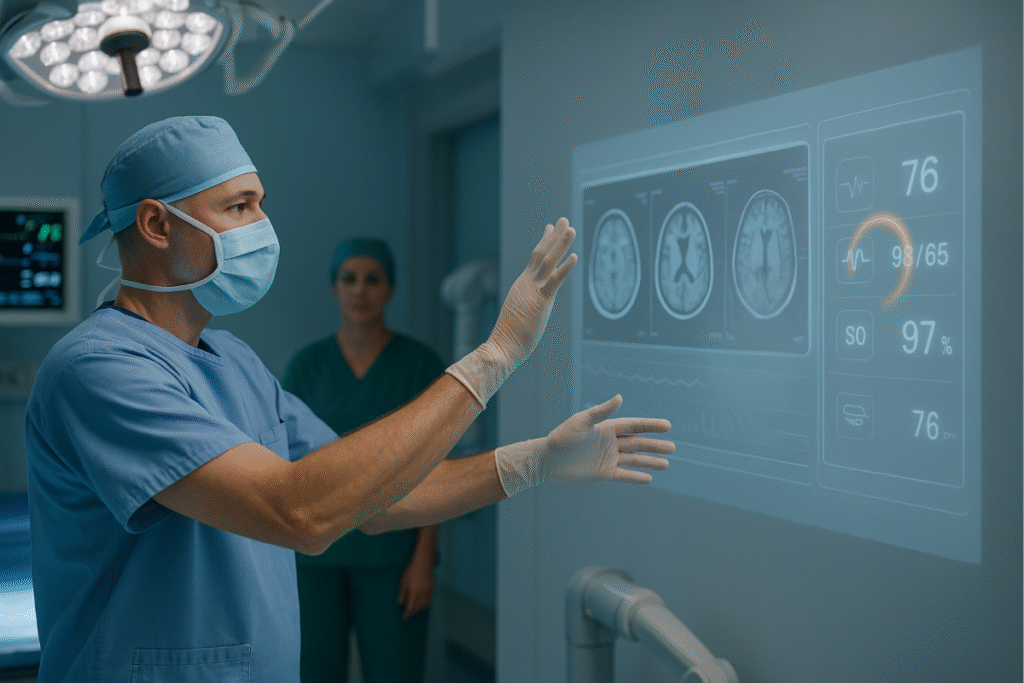
Think of the surgeon we mentioned earlier. With a camera-based physical AI enabled gesture control system, the surgeon can simply wave a hand to scroll through MRI images, make a pinch out motion to zoom in, or point to a specific area to highlight it. They interact with the data as fluidly as if they were talking with their hands, all while remaining 100% sterile. Adding voice commands can completely eliminate the need to rely on someone outside the scrub zone to manipulate data and files on behalf of the surgeon. It’s like being the conductor of a digital orchestra, where every movement has a purpose and a result.
Information In line with the Work: Displays Where They’re Most Useful

Tools should work for us; we shouldn’t have to work for the tool. Accessing computing for information about the work to be done shouldn’t interrupt the work or cause more issues. Projecting a user interface onto a surface in line with the work and using gesture controls to get what you need can be a game changer for a bustling commercial kitchen.
Projected Interactive Displays: The Museum’s Complementary Friend
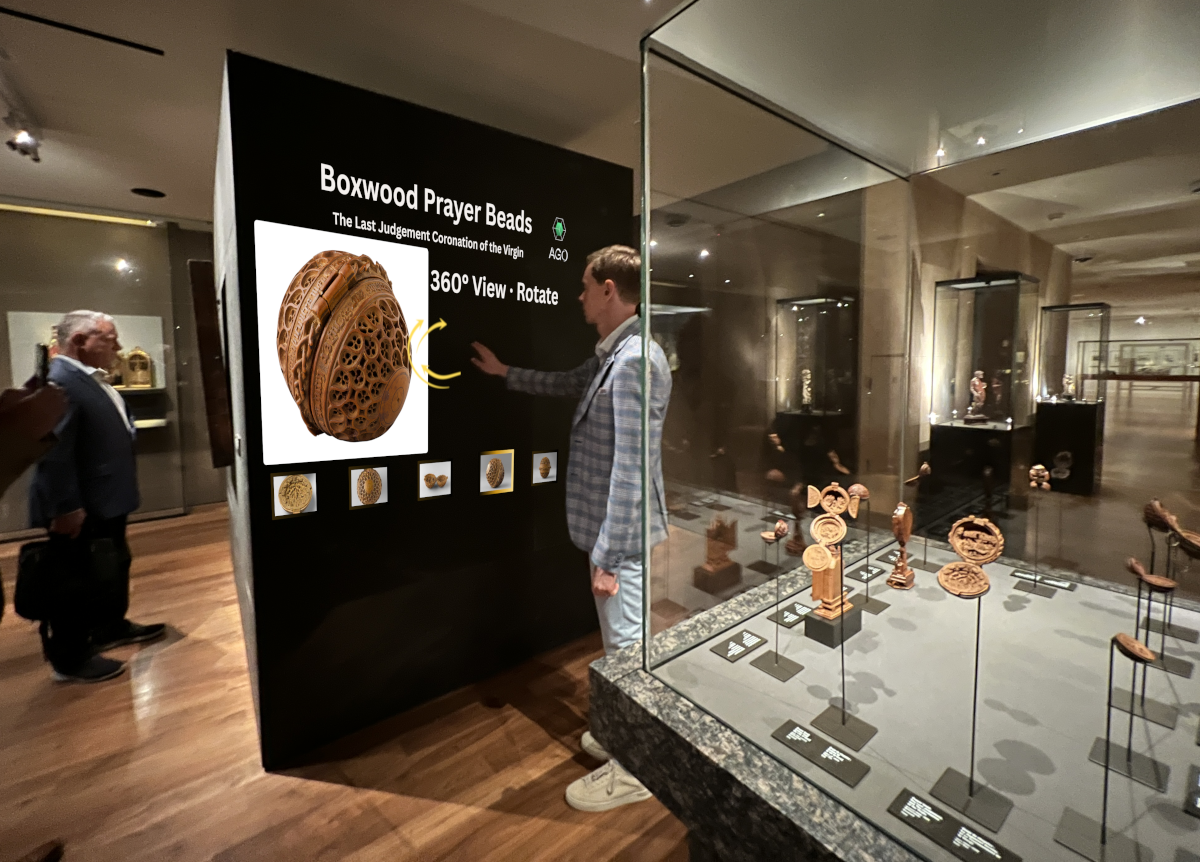
What if a museum could use screens without the screen itself? This is the promise of projected interactive displays using gesture controls. A system could project a digital overlay directly onto a wall next to a painting. With a wave of a hand, visitors could see the different layers of a masterpiece, watch a digital reconstruction of a historical moment, or see a detailed biography of the artist, all without a physical screen interrupting the flow of the gallery. This approach respects the space and the art by making the digital information a subtle, temporary extension of the physical environment, rather than a permanent, intrusive fixture.
The Goldmine for MSPs and VARs: Why You Should Care
Alright, physical AI technology is cool, but why is it a game-changer for your business? Because it allows you to solve problems that your clients might not even know are solvable. It elevates your role from the “IT guy” to a true technology consultant and business process optimizer.
From Break-Fix to Strategic Partner: Solving Core Business Problems
Selling a client a new server is a transactional sale. But designing a touchless interface for their clean room that increases production yield by 5%? That’s a strategic partnership. You’re no longer just managing their IT infrastructure; you’re directly improving their core business operations. This is the stickiest, most valuable service you can offer. It’s a deep, consultative sale that differentiates you from any competitor who just wants to talk about firewalls and cloud backups.
Identifying Your Treasure Map: Questions to Ask Your Clients
The best part is that these opportunities are likely already hiding within your existing client base. You just need to know what to look for. During your next client review, instead of just asking about their server capacity, try asking these questions:
- “Are there any points in your workflow where your team has to stop and remove gloves to use a computer?”
- “In which environments do your tablets or screens get the most physical abuse or fail most often?”
- “Do you have any processes that are slowed down by the need to maintain a sterile environment?”
- “Where does your team complain the most about technology getting in the way of their ‘real’ work?”
- “Do you have public access kiosks or displays that use touchscreens where your visitors think twice before using them because of the “ick” factor?”
The answers to these questions are the “X” on your treasure map. Each one points to an Interface Desert where you can propose a high-impact, high-margin touchless solution.
Conclusion: Your Next Value-Add is Hiding in Plain Sight
The world of touchscreens is vast, but it is not infinite. Its borders are defined by the practical realities of hygiene, safety, and harsh environments. These Interface Deserts, long considered technological backwaters, are now the new frontier for your IT innovation. By understanding the unique challenges, they present and equipping yourself with knowledge of touchless technologies and physical AI, you can move beyond the crowded market of standard IT services. You can become an indispensable partner who builds bridges to efficiency and productivity where no one else can, transforming your clients’ biggest frustrations into your greatest successes.
Where do you see Interface Deserts?
Coming Soon: SurfaceWare™
SurfaceWare™ is a Physical AI built for the channel.
Sign up for updates and discover how SurfaceWare™ can become the cornerstone of your AI products and service offerings.
Be the first to know: Sign up here
About the Author
Jeff Campbell is Head of Product at Hoververse AI, a technology, products, and services company bringing Physical AI to the channel, enabling the next wave of growth.
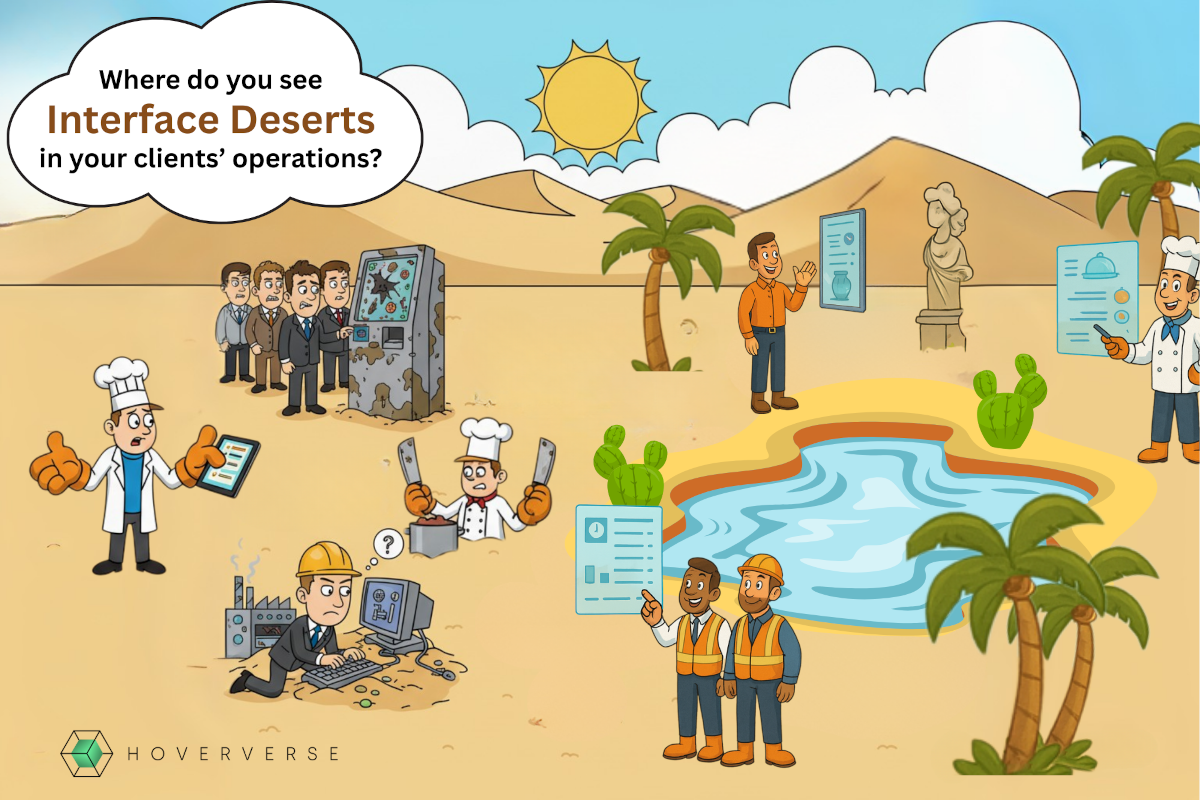
0 Comments